Spetsnaz GRU on:
[Wikipedia]
[Google]
[Amazon]
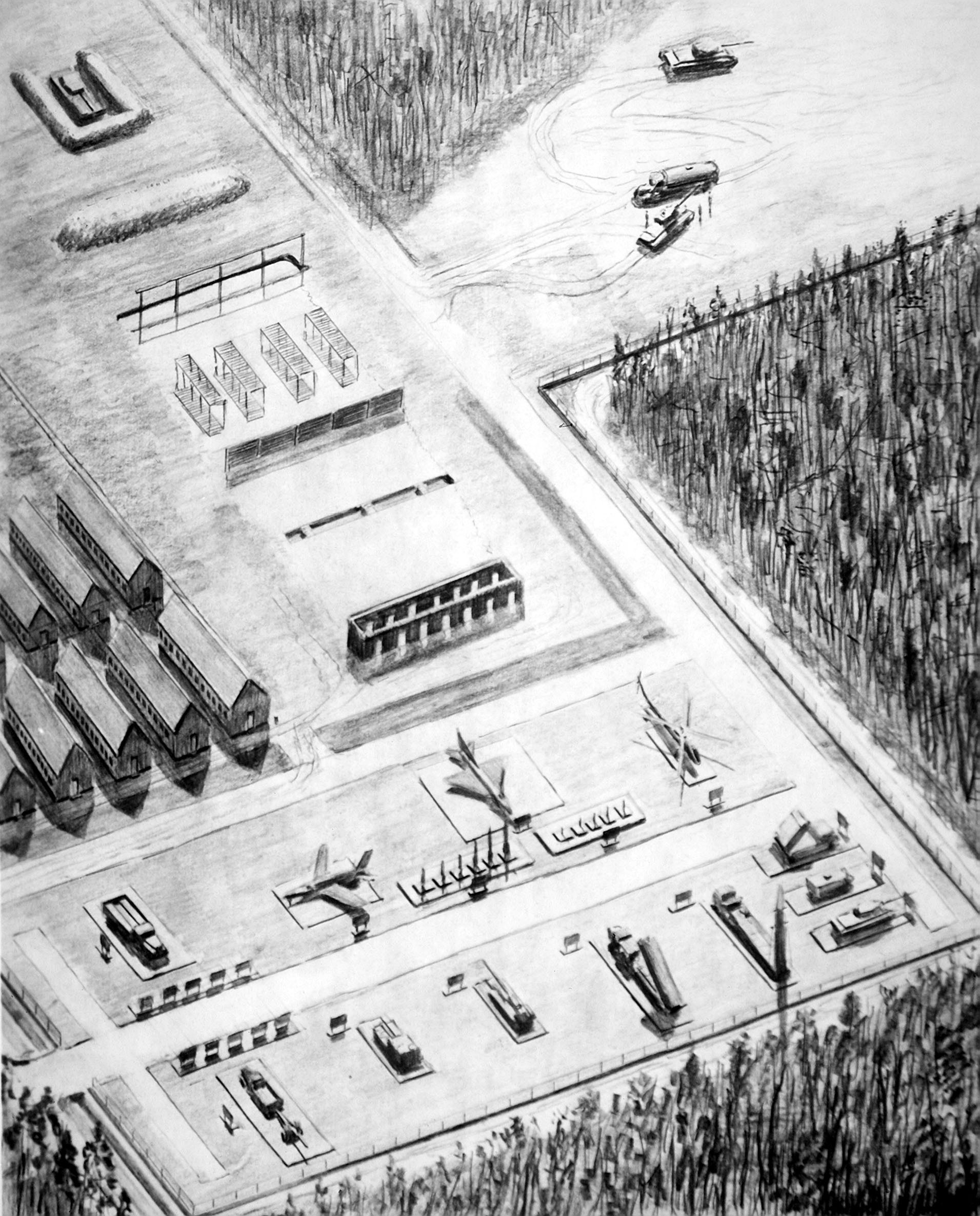 Spetsnaz GRU or Spetsnaz G.U. (formally known as Special Forces of the Main Directorate of the General Staff of the Russian Armed Forces () is the special forces (''
Spetsnaz GRU or Spetsnaz G.U. (formally known as Special Forces of the Main Directorate of the General Staff of the Russian Armed Forces () is the special forces (''
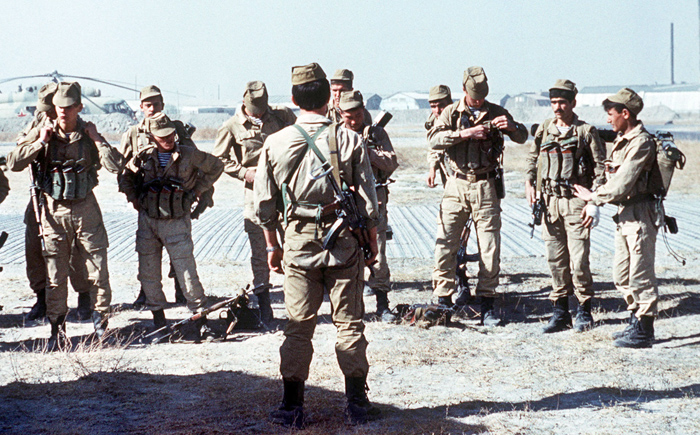 In December 1979, the undercover Spetsnaz GRU unit codenamed "Muslim Battalion" participated in
In December 1979, the undercover Spetsnaz GRU unit codenamed "Muslim Battalion" participated in
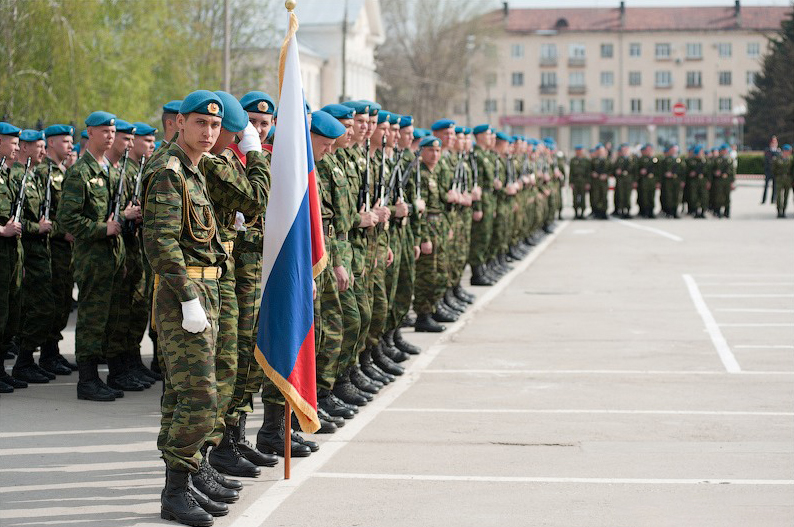 ***Brigade HQ
****Signals Company
****Special Weapons Company
****Support Company
****Logistics Company
***1st Special Purpose Detachment (1st Battalion)
***790th Special Purpose Detachment (2nd Battalion)
***791st Special Purpose Detachment (3rd Battalion)
***Training Battalion (2× Company)
** 10th Special Purpose Brigade – based in Mol'kino,
***Brigade HQ
****Signals Company
****Special Weapons Company
****Support Company
****Logistics Company
***1st Special Purpose Detachment (1st Battalion)
***790th Special Purpose Detachment (2nd Battalion)
***791st Special Purpose Detachment (3rd Battalion)
***Training Battalion (2× Company)
** 10th Special Purpose Brigade – based in Mol'kino,  ***Brigade HQ
****EOD company
****Signals Company
****Logistics Company
***370th Special Purpose Detachment
***379th Special Purpose Detachment
***585th Special Purpose Detachment
***664th Special Purpose Detachment
***669th Special Purpose Detachment
** 22nd Separate Guards Special Purpose Brigade – entire unit is based in Stepnoi, Rostov Oblast
***Brigade HQ
****EOD company
****Signals Company
****Logistics Company
***370th Special Purpose Detachment
***379th Special Purpose Detachment
***585th Special Purpose Detachment
***664th Special Purpose Detachment
***669th Special Purpose Detachment
** 22nd Separate Guards Special Purpose Brigade – entire unit is based in Stepnoi, Rostov Oblast  ***Brigade HQ
****Signals Company
****Support Company
****Special Weapons Company
****Logistics Unit
****Engineer Unit
***108th Special Purpose Detachment
***173rd Special Purpose Detachment
***305th Special Purpose Detachment
***411th Special Purpose Detachment
** 24th Guards Special Purpose Brigade – based in Irkutsk, with all units and units deployed in Irkutsk
***Brigade HQ
****Signals Company
****Special Weapons Company
****Logistics Unit
***281st Special Purpose Detachment
***297th Special Purpose Detachment
***641th Special Purpose Detachment
** 25th Special Purpose Regiment
*
***Brigade HQ
****Signals Company
****Support Company
****Special Weapons Company
****Logistics Unit
****Engineer Unit
***108th Special Purpose Detachment
***173rd Special Purpose Detachment
***305th Special Purpose Detachment
***411th Special Purpose Detachment
** 24th Guards Special Purpose Brigade – based in Irkutsk, with all units and units deployed in Irkutsk
***Brigade HQ
****Signals Company
****Special Weapons Company
****Logistics Unit
***281st Special Purpose Detachment
***297th Special Purpose Detachment
***641th Special Purpose Detachment
** 25th Special Purpose Regiment
*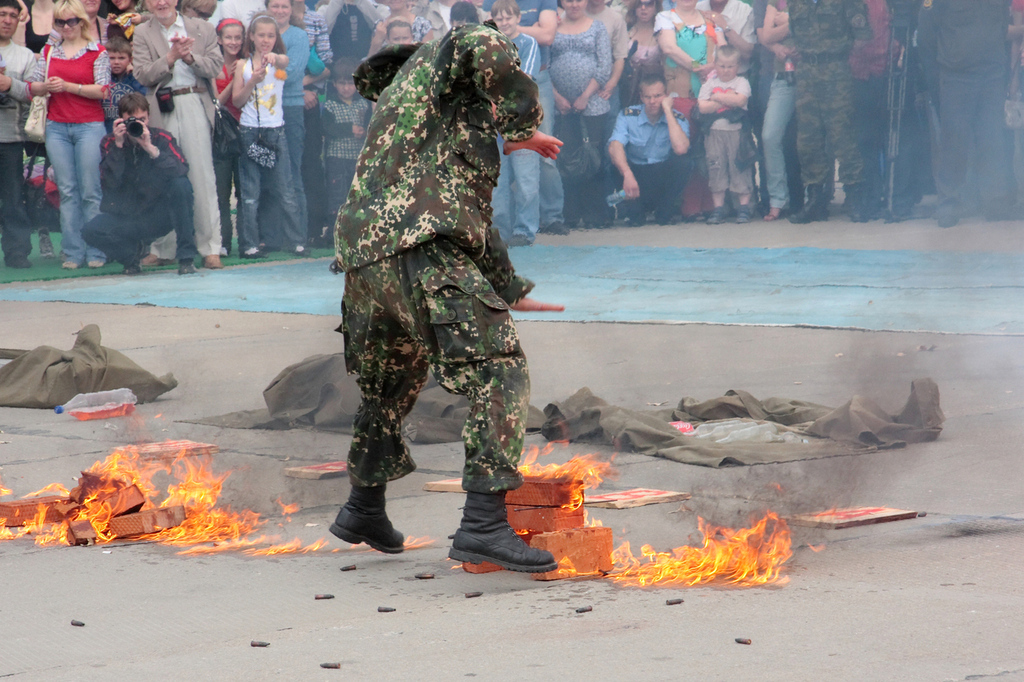 * Russian Navy
* Russian Navy

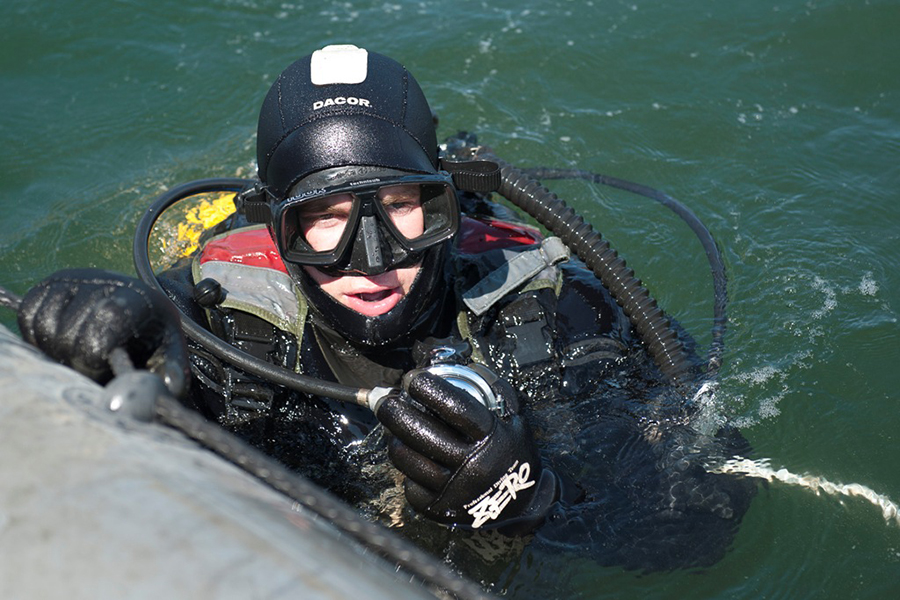 The navy also fields dedicated maritime sabotage and counter-sabotage diver units which are attached to the naval infantry. These units also include
The navy also fields dedicated maritime sabotage and counter-sabotage diver units which are attached to the naval infantry. These units also include
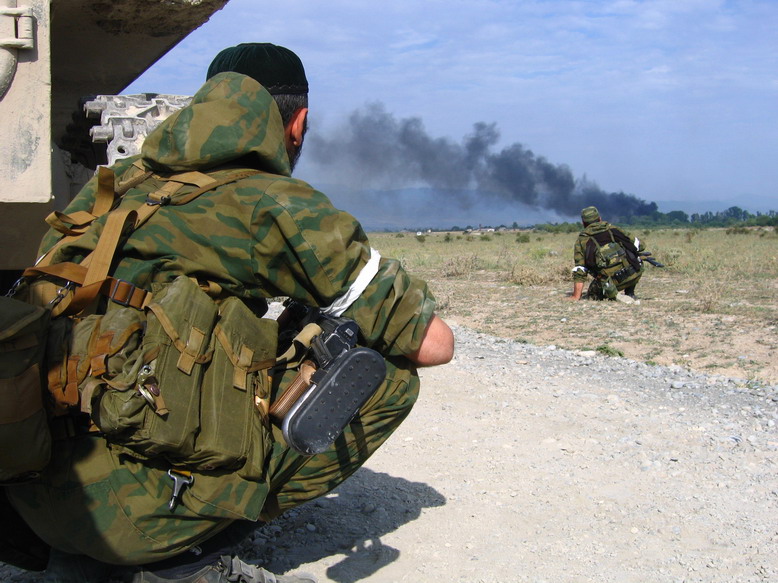 The
The
 Spetsnaz GRU or Spetsnaz G.U. (formally known as Special Forces of the Main Directorate of the General Staff of the Russian Armed Forces () is the special forces (''
Spetsnaz GRU or Spetsnaz G.U. (formally known as Special Forces of the Main Directorate of the General Staff of the Russian Armed Forces () is the special forces (''spetsnaz
Spetsnaz are special forces in numerous post-Soviet states. (The term is borrowed from rus, спецназ, p=spʲɪtsˈnas; abbreviation for or 'Special Purpose Military Units'; or .)
Historically, the term ''spetsnaz'' referred to the S ...
'') of the G.U., the foreign military-intelligence agency of the Armed Forces of the Russian Federation
The Armed Forces of the Russian Federation (, ), commonly referred to as the Russian Armed Forces, are the military forces of Russia. In terms of active-duty personnel, they are the world's fifth-largest military force, with at least two m ...
.
The Spetsnaz GRU, the first ''spetsnaz'' force in the Soviet Union
The Soviet Union,. officially the Union of Soviet Socialist Republics. (USSR),. was a List of former transcontinental countries#Since 1700, transcontinental country that spanned much of Eurasia from 1922 to 1991. A flagship communist state, ...
, formed in 1949 as the military force of the Main Intelligence Directorate (GRU), the foreign military-intelligence agency of the Soviet Armed Forces
The Soviet Armed Forces, the Armed Forces of the Soviet Union and as the Red Army (, Вооружённые Силы Советского Союза), were the armed forces of the Russian SFSR (1917–1922), the Soviet Union (1922–1991), and th ...
. The force was designed in the context of the Cold War to carry out reconnaissance
In military operations, reconnaissance or scouting is the exploration of an area by military forces to obtain information about enemy forces, terrain, and other activities.
Examples of reconnaissance include patrolling by troops (skirmisher ...
and sabotage
Sabotage is a deliberate action aimed at weakening a polity, effort, or organization through subversion, obstruction, disruption, or destruction. One who engages in sabotage is a ''saboteur''. Saboteurs typically try to conceal their identitie ...
against enemy targets in the form of special reconnaissance
Special reconnaissance (SR) or Recon Team is conducted by small units of highly trained military personnel, usually from special forces units or military intelligence organizations, who operate behind enemy lines, avoiding direct combat and detec ...
and direct-action attacks. The Spetsnaz GRU inspired additional ''spetsnaz'' forces attached to other Soviet intelligence
This is a list of historical secret police organizations. In most cases they are no longer current because the regime that ran them was overthrown or changed, or they changed their names. Few still exist under the same name as legitimate police fo ...
agencies, such as Vympel
Directorate "V" of the FSB Special Purpose Center, often referred to as Spetsgruppa "V" Vympel ( pennant in Russian, originated from German , and having the same meaning), but also known as KGB Directorate "V", Vega Group, is an elite Russia ...
(founded in 1981) and the Alpha Group (established in 1974) - both within the KGB
The KGB (russian: links=no, lit=Committee for State Security, Комитет государственной безопасности (КГБ), a=ru-KGB.ogg, p=kəmʲɪˈtʲet ɡəsʊˈdarstvʲɪn(ː)əj bʲɪzɐˈpasnəsʲtʲɪ, Komitet gosud ...
.
Modus operandi
The concept of using special forces tactics and strategies in theSoviet Union
The Soviet Union,. officially the Union of Soviet Socialist Republics. (USSR),. was a List of former transcontinental countries#Since 1700, transcontinental country that spanned much of Eurasia from 1922 to 1991. A flagship communist state, ...
was originally proposed by the military theorist Mikhail Svechnykov, who envisaged the development of unconventional warfare
Unconventional warfare (UW) is broadly defined as "military and quasi-military operations other than conventional warfare" and may use covert forces, subversion, or guerrilla warfare. This is typically done to avoid escalation into conventional ...
capabilities in order to overcome disadvantages that conventional forces faced in the field. Svechnykov was executed during the Great Purge
The Great Purge or the Great Terror (russian: Большой террор), also known as the Year of '37 (russian: 37-й год, translit=Tridtsat sedmoi god, label=none) and the Yezhovshchina ('period of Yezhov'), was Soviet General Secret ...
in 1938, but practical implementation of his ideas was begun by Ilya Starinov, dubbed the "grandfather of the ''spetsnaz''".Carey Schofield, ''The Russian Elite: Inside Spetsnaz and the Airborne Forces'', Greenhill, London, 1993, p.34
Following the entrance of the Soviet Union into World War II
World War II or the Second World War, often abbreviated as WWII or WW2, was a world war that lasted from 1939 to 1945. It involved the vast majority of the world's countries—including all of the great powers—forming two opposing ...
, basic forces dedicated to acts of reconnaissance
In military operations, reconnaissance or scouting is the exploration of an area by military forces to obtain information about enemy forces, terrain, and other activities.
Examples of reconnaissance include patrolling by troops (skirmisher ...
and sabotage
Sabotage is a deliberate action aimed at weakening a polity, effort, or organization through subversion, obstruction, disruption, or destruction. One who engages in sabotage is a ''saboteur''. Saboteurs typically try to conceal their identitie ...
were formed under the supervision of the Second Department of the General Staff of the Soviet Armed Forces
The General Staff of the Armed Forces of the Russian Federation (russian: Генеральный штаб Вооружённых сил Российской Федерации, General'nyy shtab Vooruzhonnykh sil Rossiyskoy Federatsii) is the mi ...
, and were subordinate to the commanders of Fronts.
The primary function of Spetsnaz troops in wartime was infiltration/insertion behind enemy lines (either in uniform or civilian clothing), usually well before hostilities are scheduled to begin and, once in place, to commit acts of sabotage such as the destruction of vital communications logistics centers, as well as the assassination of key government leaders and military officers.
Spetsnaz GRU training included: weapons handling, fast rappelling, explosives training, marksmanship, counter-terrorism
Counterterrorism (also spelled counter-terrorism), also known as anti-terrorism, incorporates the practices, military tactics, techniques, and strategies that governments, law enforcement, business, and intelligence agencies use to combat or ...
, airborne training, hand-to-hand combat, climbing (alpine rope techniques), diving, underwater combat, emergency medical training, and demolition.
History
Soviet era
The situation was reviewed after the war ended, and between 1947 and 1950 the whole of the Main Intelligence Directorate (GRU) was reorganized.Carey Schofield, ''The Russian Elite: Inside Spetsnaz and the Airborne Forces'', Greenhill, London, 1993, p.35 The first "independent reconnaissance companies of special purpose" were formed in 1949, to work fortank
A tank is an armoured fighting vehicle intended as a primary offensive weapon in front-line ground combat. Tank designs are a balance of heavy firepower, strong armour, and good battlefield mobility provided by tracks and a powerful engi ...
and combined-arms armies, which were tasked to eliminate amongst others enemy nuclear weapons systems such as the MGR-3 Little John
The MGR-3 Little John was a free flight artillery rocket system designed and put into service by the U.S. Army during the 1950s and 1960s.
Description
Carried on the XM34 rocket launcher, it could carry either nuclear or conventional warhea ...
and MGM-1 Matador
The Martin MGM-1 Matador was the first operational surface-to-surface cruise missile designed and built by the United States. It was developed after World War II, drawing upon their wartime experience with creating the Republic-Ford JB-2, a ...
.
In 1957, the first Spetsnaz battalions were formed under the GRU, five to operate beyond the 150–200 km range of the reconnaissance companies. The first brigades were formed in 1962, reportedly to reach up to 750 kilometres in the rear to destroy U.S. weapons systems such as the MGM-52 Lance
The MGM-52 Lance was a mobile field artillery tactical surface-to-surface missile (tactical ballistic missile) system used to provide both nuclear and conventional fire support to the United States Army. The missile's warhead was developed at La ...
, MGM-29 Sergeant
The MGM-29 Sergeant was an American short-range, solid fuel, surface-to-surface missile developed by the Jet Propulsion Laboratory. The missiles were built by Sperry Utah Company. The Sergeant was the third and last in a series of JPL rockets for ...
, and MGM-31 Pershing
The MGM-31A Pershing was the missile used in the Pershing 1 and Pershing 1a field artillery missile systems. It was a solid-fueled two-stage theater ballistic missile designed and built by Martin Marietta to replace the PGM-11 Redstone missile ...
.
Two 'study regiments' were established in the 1960s to train specialists and NCOs, the first in 1968 at Pechora near Pskov, and the second in 1970 at Chirchik near Tashkent
Tashkent (, uz, Toshkent, Тошкент/, ) (from russian: Ташкент), or Toshkent (; ), also historically known as Chach is the capital and largest city of Uzbekistan. It is the most populous city in Central Asia, with a population of 2 ...
. According to Vladimir Rezun, a GRU defector who used the pseudonym "Viktor Suvorov
Vladimir Bogdanovich Rezun (russian: link=no, Владимир Богданович Резун; born 20 April 1947), known by his pseudonym of Viktor Suvorov () is a former Soviet GRU officer who is the author of non-fiction books about World ...
", there were 20 GRU Spetsnaz brigades plus 41 separate companies at the time of his defection in 1978.
Known missions
The first major foreign operation of the unit came in August 1968, when Moscow decided to crack down on the Prague Spring and move the troops ofWarsaw Pact
The Warsaw Pact (WP) or Treaty of Warsaw, formally the Treaty of Friendship, Cooperation and Mutual Assistance, was a collective defense treaty signed in Warsaw, Poland, between the Soviet Union and seven other Eastern Bloc socialist repub ...
countries into Czechoslovakia
, rue, Чеськословеньско, , yi, טשעכאסלאוואקיי,
, common_name = Czechoslovakia
, life_span = 1918–19391945–1992
, p1 = Austria-Hungary
, image_p1 ...
. The Spetsnaz GRU was tasked with capturing the Prague Airport
Prague ( ; cs, Praha ; german: Prag, ; la, Praga) is the capital and largest city in the Czech Republic, and the historical capital of Bohemia. On the Vltava river, Prague is home to about 1.3 million people. The city has a temperate oc ...
. On the night of 21 August, a Soviet passenger plane requested an emergency landing at the Prague Airport, allegedly due to engine failure.https://www.rbth.com/defence/2017/05/10/gru-alpha-vympel-russias-famous-covert-operators-759604 , date=21 Nov 2019http://survincity.com/2011/03/how-did-the-russian-special-forces/ , date=21 Nov 2019
After landing, the commandos, without firing a shot, seized the airport and took over air traffic control. At the same time, other Spetsnaz GRU units that had infiltrated into Prague a few days before the operation seized control of other key city points.
 In December 1979, the undercover Spetsnaz GRU unit codenamed "Muslim Battalion" participated in
In December 1979, the undercover Spetsnaz GRU unit codenamed "Muslim Battalion" participated in Operation Storm-333
Operation Storm-333 (russian: Шторм-333, ), also known as the Tajbeg Palace Assault, was executed by the Soviet Union in Afghanistan on 27 December 1979. It saw Spetsnaz storm the heavily fortified Tajbeg Palace in Kabul and subsequently as ...
, the successful mission to assassinate Hafizullah Amin
Hafizullah Amin (Pashto/ prs, حفيظ الله امين; 1 August 192927 December 1979) was an Afghan communist revolutionary, politician and teacher. He organized the Saur Revolution of 1978 and co-founded the Democratic Republic of Afghan ...
, the President of Afghanistan
Afghanistan, officially the Islamic Emirate of Afghanistan,; prs, امارت اسلامی افغانستان is a landlocked country located at the crossroads of Central Asia and South Asia. Referred to as the Heart of Asia, it is bordere ...
, and to capture Amin's residential palace which triggered the Soviet–Afghan War
The Soviet–Afghan War was a protracted armed conflict fought in the Democratic Republic of Afghanistan from 1979 to 1989. It saw extensive fighting between the Soviet Union and the Afghan mujahideen (alongside smaller groups of anti-Sovie ...
.
Most of Spetsnaz GRU's operations remain classified even after the dissolution of the Soviet Union. It is believed the special forces had participated in operations in more than nineteen countries around the world in Africa, Asia and South America. From time to time, the men also served as military instructors and set up training camps for Soviet-backed fighters in Vietnam and Angola
, national_anthem = " Angola Avante"()
, image_map =
, map_caption =
, capital = Luanda
, religion =
, religion_year = 2020
, religion_ref =
, coordina ...
.
Russian Federation era
Following the deactivation of the SovietGRU
The Main Directorate of the General Staff of the Armed Forces of the Russian Federation, rus, Гла́вное управле́ние Генера́льного шта́ба Вооружённых сил Росси́йской Федера́ци ...
in 1992, control of the special forces was transferred to the newly formed G.U. of Russia and were maintained to their respective assigned units as before. According to Stanislav Lunev, who defected to the U.S. in 1992, the GRU also commanded some 25,000 Spetsnaz troops as of 1997.
Following the 2008 Russian military reform, a brand new Directorate of Special Operations was established in 2009 following studies of American and various Western special operations forces units and commands. The newly formed Special Operations Forces
Special forces and special operations forces (SOF) are military units trained to conduct special operations. NATO has defined special operations as "military activities conducted by specially designated, organized, selected, trained and equip ...
which is directly subordinated to the General Staff, bypassing the GRU. In 2013, the Directorate became the Special Operations Forces Command with a GRU unit transferring to the command.
In 2010, Spetsnaz GRU units were reassigned to the military districts of the Ground Forces
An army (from Old French ''armee'', itself derived from the Latin verb ''armāre'', meaning "to arm", and related to the Latin noun ''arma'', meaning "arms" or "weapons"), ground force or land force is a fighting force that fights primarily on ...
and was subordinate to the operational-strategic commands until 2012, due to then Defence Minister Anatoliy Serdyukov
Anatoly Eduardovich Serdyukov (russian: Анатолий Эдуардович Сердюков; born 8 January 1962) is a Russian politician and businessman. He was Russia's Minister of Defense from 15 February 2007 to 6 November 2012, and made ...
's military reforms. This decision was reversed in 2013 and Spetsnaz GRU units were reassigned to their original GRU divisions.
Known operations
Throughout the mid-1990s to the 2000s, Spetsnaz GRU were involved in both the First Chechen War and more prominently in theSecond Chechen War
The Second Chechen War (russian: Втора́я чече́нская война́, ) took place in Chechnya and the border regions of the North Caucasus between the Russian Federation and the Chechen Republic of Ichkeria, from August 1999 ...
and also the Invasion of Dagestan
The Dagestan War (russian: Дагестанская война), also known as the Invasion of Militants in Dagestan (russian: Вторжение боевиков в Дагестан) began when the Chechnya-based Islamic International Peacekeep ...
in August 1999. The special forces learned invaluable lessons from the first war and transformed into a better and more effective fighting force and were instrumental in Russia's and the Russian backed government's success in the second war.
In 2003, during the Second Chechen War, the GRU formed the Special Battalions ''Vostok'' and ''Zapad'', two ethnic Chechen units that belonged to the Spetsnaz GRU which fought primarily in Chechnya, and also in the 2008 Russo-Georgian War
The 2008 Russo-Georgian WarThe war is known by a variety of other names, including Five-Day War, August War and Russian invasion of Georgia. was a war between Georgia, on one side, and Russia and the Russian-backed self-proclaimed republics of Sou ...
as well as peacekeeping operations after the 2006 Lebanon War.
Spetsnaz GRU maintains an airborne unit, the Separate Spetsnaz Airborne Reconnaissance Unit (codenamed No. 48427), which participated in the 2008 Georgian War. The unit is housed at Matrosskaya Tishina 10 in Moscow
Moscow ( , US chiefly ; rus, links=no, Москва, r=Moskva, p=mɐskˈva, a=Москва.ogg) is the capital and largest city of Russia. The city stands on the Moskva River in Central Russia, with a population estimated at 13.0 millio ...
.
During the period of insurgency in the North Caucasus
The North Caucasus, ( ady, Темыр Къафкъас, Temır Qafqas; kbd, Ишхъэрэ Къаукъаз, İṩxhərə Qauqaz; ce, Къилбаседа Кавказ, Q̇ilbaseda Kavkaz; , os, Цӕгат Кавказ, Cægat Kavkaz, inh, ...
region, Spetsnaz GRU along with special forces from the FSB and MVD
The Ministry of Internal Affairs of the Russian Federation (MVD; russian: Министерство внутренних дел (МВД), ''Ministerstvo vnutrennikh del'') is the interior ministry of Russia.
The MVD is responsible for law enfor ...
conducted numerous special operations and counter-terrorism operations against mainly the Caucasus Emirate
The Caucasus Emirate ( ce, Имарат Кавказ, Imarat Kavkaz, IK; russian: Кавказский эмират, Kavkazskiy emirat), also known as the Caucasian Emirate, Emirate of Caucasus, or Islamic Emirate of the Caucasus, was a Jihadist ...
, Wilayat al-Qawqaz and other smaller terrorist groups.
After the Crimean crisis, during which some units of Spetsnaz GRU were a part of the " Little green men", and the start of the rebel insurgency by pro-Russian
Russophilia (literally love of Russia or Russians) is admiration and fondness of Russia (including the era of the Soviet Union and/or the Russian Empire), Russian history and Russian culture. The antonym is Russophobia. In the 19th Century, ...
rebels, Ukraine has on numerous occasions accused various Spetsnaz forces of aiding the rebels and even fighting on the ground in Eastern Ukraine
Eastern Ukraine or east Ukraine ( uk, Східна Україна, Skhidna Ukrayina; russian: Восточная Украина, Vostochnaya Ukraina) is primarily the territory of Ukraine east of the Dnipro (or Dnieper) river, particularly Khar ...
. In December 2014, the Ukrainian military
, imports =
, exports =
, history =
, ranks = Military ranks of Ukraine
, country=Ukraine
The Armed Forces of Ukraine ( uk, Збро́йні си́ли Украї́ни), most commonly known ...
claimed that the Spetsnaz GRU was involved in attacks on an airport
An airport is an aerodrome with extended facilities, mostly for commercial air transport. Airports usually consists of a landing area, which comprises an aerially accessible open space including at least one operationally active surfa ...
in Donetsk
Donetsk ( , ; uk, Донецьк, translit=Donets'k ; russian: Донецк ), formerly known as Aleksandrovka, Yuzivka (or Hughesovka), Stalin and Stalino (see also: cities' alternative names), is an industrial city in eastern Ukraine loca ...
which was later captured by DPR in the battle
A battle is an occurrence of combat in warfare between opposing military units of any number or size. A war usually consists of multiple battles. In general, a battle is a military engagement that is well defined in duration, area, and force ...
.
In late 2015, GRU special forces operators were reportedly involved in the Syrian Civil War, appearing in the government offensives of Aleppo and Homs. GRU officials have also visited Qamishli
Qamishli ( ar, ٱلْقَامِشْلِي, Al-Qāmišlī, ku, قامشلۆ, Qamişlo, syc, ܒܝܬ ܙܠܝ̈ܢ, Bēṯ Zālīn, lit=House of Reeds or syr, ܩܡܫܠܐ, translit=Qamishlo)
, near the border with Turkey
Turkey ( tr, Türkiye ), officially the Republic of Türkiye ( tr, Türkiye Cumhuriyeti, links=no ), is a transcontinental country located mainly on the Anatolian Peninsula in Western Asia, with a small portion on the Balkan Peninsula in ...
.
2022 invasion of Ukraine
GRU special forces units participated in the2022 invasion of Ukraine
On 24 February 2022, in a major escalation of the Russo-Ukrainian War, which began in 2014. The invasion has resulted in tens of thousands of deaths on both sides. It has caused Europe's largest refugee crisis since World War II. An ...
in various roles. Spestnaz units were sent in during the first days of the invasion as saboteurs
Sabotage is a deliberate action aimed at weakening a polity, effort, or organization through subversion, obstruction, disruption, or destruction. One who engages in sabotage is a ''saboteur''. Saboteurs typically try to conceal their identiti ...
disguised as civilians or Ukrainian military, while others were sent to capture or assassinate important Ukrainian government members, including President Volodymyr Zelenskyy
Volodymyr Oleksandrovych Zelenskyy, ; russian: Владимир Александрович Зеленский, Vladimir Aleksandrovich Zelenskyy, (born 25 January 1978; also transliterated as Zelensky or Zelenskiy) is a Ukrainian politicia ...
.
List of GRU special units
Below is a list of current "Spetsnaz
Spetsnaz are special forces in numerous post-Soviet states. (The term is borrowed from rus, спецназ, p=spʲɪtsˈnas; abbreviation for or 'Special Purpose Military Units'; or .)
Historically, the term ''spetsnaz'' referred to the S ...
" units in the Russian Armed Forces that fall under GRU operational control during wartime operations:
*Russian Ground Forces
The Russian Ground Forces (russian: Сухопутные войска �ВSukhoputnyye voyska V}), also known as the Russian Army (, ), are the land forces of the Russian Armed Forces.
The primary responsibilities of the Russian Ground Forces ...
- fields 7 spetsnaz brigades of varying sizes and one spetsnaz regiment.
** 2nd Guards Spetsnaz Brigade – based in Promezhitsa, Pskov Oblast
***Brigade HQ
**** Signals Battalion (2× Company)
**** Support Company
*** 70th Special Purpose Detachment
*** 329th Special Purpose Detachment
*** 700th Special Purpose Detachment
*** Training Battalion (2× Company)
** 3rd Guards Special Purpose Brigade – based in Tolyatti
Tolyatti ( rus, Толья́тти, p=tɐlʲˈjætʲ(ː)ɪ), also known as Togliatti, formerly known as Stavropol (1737–1964), is a city in Samara Oblast, Russia. It is the largest city in Russia which does not serve as the administrative center ...
 ***Brigade HQ
****Signals Company
****Special Weapons Company
****Support Company
****Logistics Company
***1st Special Purpose Detachment (1st Battalion)
***790th Special Purpose Detachment (2nd Battalion)
***791st Special Purpose Detachment (3rd Battalion)
***Training Battalion (2× Company)
** 10th Special Purpose Brigade – based in Mol'kino,
***Brigade HQ
****Signals Company
****Special Weapons Company
****Support Company
****Logistics Company
***1st Special Purpose Detachment (1st Battalion)
***790th Special Purpose Detachment (2nd Battalion)
***791st Special Purpose Detachment (3rd Battalion)
***Training Battalion (2× Company)
** 10th Special Purpose Brigade – based in Mol'kino, Krasnodar Krai
Krasnodar Krai (russian: Краснода́рский край, r=Krasnodarsky kray, p=krəsnɐˈdarskʲɪj kraj) is a federal subject of Russia (a krai), located in the North Caucasus region in Southern Russia and administratively a part of ...
***Brigade HQ
****Signals Company
****Special Weapons Company
****Support Company
****Logistics Company
**** K-9 Unit
***325th Special Purpose Detachment
***328th Special Purpose Detachment
***Training Battalion (2× Company)
** 14th Special Purpose Brigade – based in Ussuriysk
Ussuriysk (russian: Уссури́йск) is a city in Primorsky Krai, Russia, located in the fertile valley of the Razdolnaya River, north of Vladivostok, the administrative center of the krai, and about from both the China–Russia border and ...
***Brigade HQ
****Signals Company
****Logistics Company
*** 282nd Special Purpose Detachment
*** 294th Special Purpose Detachment
*** 308th Special Purpose Detachment
***Training Battalion (2× Company)
** 16th Special Purpose Brigade
16 (sixteen) is the natural number following 15 and preceding 17. 16 is a composite number, and a square number, being 42 = 4 × 4. It is the smallest number with exactly five divisors, its proper divisors being , , and .
In English speech, ...
– based in Tambov
Tambov (, ; rus, Тамбов, p=tɐmˈbof) is a city and the administrative center of Tambov Oblast, central Russia, at the confluence of the Tsna and Studenets Rivers, about south-southeast of Moscow. Population: 280,161 ( 2010 Census); 29 ...
, with all units deployed in Tambov except for the 664th SPD.Сергей Козлов. Спецназ ГРУ: Очерки истории. // Том 5. Новейшая история. 1999-2010 гг.. — Москва: Русская панорама, 2010. — P. 40–41, 44–50, 65, 335–336, 492–493. — 400 p. — 3 000 экз.  ***Brigade HQ
****EOD company
****Signals Company
****Logistics Company
***370th Special Purpose Detachment
***379th Special Purpose Detachment
***585th Special Purpose Detachment
***664th Special Purpose Detachment
***669th Special Purpose Detachment
** 22nd Separate Guards Special Purpose Brigade – entire unit is based in Stepnoi, Rostov Oblast
***Brigade HQ
****EOD company
****Signals Company
****Logistics Company
***370th Special Purpose Detachment
***379th Special Purpose Detachment
***585th Special Purpose Detachment
***664th Special Purpose Detachment
***669th Special Purpose Detachment
** 22nd Separate Guards Special Purpose Brigade – entire unit is based in Stepnoi, Rostov Oblast  ***Brigade HQ
****Signals Company
****Support Company
****Special Weapons Company
****Logistics Unit
****Engineer Unit
***108th Special Purpose Detachment
***173rd Special Purpose Detachment
***305th Special Purpose Detachment
***411th Special Purpose Detachment
** 24th Guards Special Purpose Brigade – based in Irkutsk, with all units and units deployed in Irkutsk
***Brigade HQ
****Signals Company
****Special Weapons Company
****Logistics Unit
***281st Special Purpose Detachment
***297th Special Purpose Detachment
***641th Special Purpose Detachment
** 25th Special Purpose Regiment
*
***Brigade HQ
****Signals Company
****Support Company
****Special Weapons Company
****Logistics Unit
****Engineer Unit
***108th Special Purpose Detachment
***173rd Special Purpose Detachment
***305th Special Purpose Detachment
***411th Special Purpose Detachment
** 24th Guards Special Purpose Brigade – based in Irkutsk, with all units and units deployed in Irkutsk
***Brigade HQ
****Signals Company
****Special Weapons Company
****Logistics Unit
***281st Special Purpose Detachment
***297th Special Purpose Detachment
***641th Special Purpose Detachment
** 25th Special Purpose Regiment
*Russian Airborne Forces
The Russian Airborne Forces (russian: Воздушно-десантные войска России, ВДВ, Vozdushno-desantnye voyska Rossii, VDV) are the airborne forces branch of the Russian Armed Forces. It was formed in 1992 from units of ...
** 45th Guards Special Purpose Brigade – based in Kubinka
Kubinka (russian: Ку́бинка) is a town in Odintsovsky District of Moscow Oblast, Russia, located on the Setun River, west of Moscow. Population:
__TOC__
History
Kubinka, founded in the 15th century, may have been named after Prince , a ...
 * Russian Navy
* Russian Navy

 The navy also fields dedicated maritime sabotage and counter-sabotage diver units which are attached to the naval infantry. These units also include
The navy also fields dedicated maritime sabotage and counter-sabotage diver units which are attached to the naval infantry. These units also include combat swimmers
A frogman is someone who is trained in scuba diving or human swimming, swimming underwater in a tactical capacity that includes military, and in some European countries, police work. Such personnel are also known by the more formal names of co ...
, trained to conduct underwater combat, mining
Mining is the extraction of valuable minerals or other geological materials from the Earth, usually from an ore body, lode, vein, seam, reef, or placer deposit. The exploitation of these deposits for raw material is based on the economic ...
and clearance diving. The task is to protect ships and other fleet assets from enemy frogmen and special forces. The term "combat swimmers" is correct term in relation to the staff of the OSNB PDSS. Every PDSS unit has approximately 50–60 combat swimmers.
There are PDSS units in all major naval bases across Russia. The OMRP is composed of reconnaissance divers that fall under operational subordination to the Main Intelligence Directorate (GRU). There are four OMRPs in Russia serving each fleet: Northern Fleet, Baltic Fleet, Black Sea Fleet and Pacific Fleet, with each consisting of 120–200 personnel.
* Naval Special Reconnaissance (OMRP)
** 42nd Marine Reconnaissance point ( Pacific Fleet)
** 388th Marine Reconnaissance point ( Black Sea Fleet) – reorganized from the former 431st MRP
** 420th Marine Reconnaissance point (Northern Fleet
Severnyy flot
, image = Great emblem of the Northern Fleet.svg
, image_size = 150px
, caption = Northern Fleet's great emblem
, start_date = June 1, 1733; Sov ...
)
** 561st Marine Reconnaissance point ( Baltic Fleet)
* Special Purpose Detachments for Combat against Underwater Diversionary Forces and Devices (OSNB PDSS)
**101st SPDC PDSS - based in Petropavlovsk-Kamchatsky
Petropavlovsk-Kamchatsky ( rus, Петропавловск-Камчатский, a=Петропавловск-Камчатский.ogg, p=pʲɪtrɐˈpavləfsk kɐmˈtɕatskʲɪj) is a city and the administrative, industrial, scientific, and cultu ...
** 102nd SPDC PDSS - based in Sevastopol
Sevastopol (; uk, Севасто́поль, Sevastópolʹ, ; gkm, Σεβαστούπολις, Sevastoúpolis, ; crh, Акъя́р, Aqyár, ), sometimes written Sebastopol, is the largest city in Crimea, and a major port on the Black Sea ...
** 136th SPDC PDSS - based in Novorossiysk
** 137th SPDC PDSS - based in Makhachkala
Makhachkala ( rus, Махачкала, , məxətɕkɐˈla, links=yes),; av, Махӏачхъала, Maħaçqala; ce, ХӀинжа-ГӀала, Hinƶa-Ġala; az, Маһачгала, Mahaçqala; nog, Махачкала; lbe, Махачкъала; ...
** 140th SPDC PDSS - based in Vidyayevo
Vidyayevo (russian: Видя́ево) is a closed rural inhabited locality in Murmansk Oblast, Russia. Despite having a rural status, it is municipally incorporated as Vidyayevo Urban Okrug, as such status is the only one allowed by the federa ...
** 152nd SPDC PDSS - based in Polyarny, Murmansk Oblast
Polyarny (russian: Поля́рный) is a town and the administrative center of the closed administrative-territorial formation of Alexandrovsk in Murmansk Oblast, Russia, situated on the outermost western side of the Kola Bay. Population:
I ...
** 153rd SPDC PDSS - based in Ostrovnoy, Murmansk Oblast
Ostrovnoy (russian: Островно́й), previously known as Murmansk-140 (), is a closed town in Murmansk Oblast, Russia. As of the 2010 Census, its population was 2,171; down from 5,032 recorded in the 2002 Census.
History
The first naval ...
** 159th SPDC PDSS - based in Razboynik
** 160th SPDC PDSS - based in Murmansk
Murmansk (Russian: ''Мурманск'' lit. "Norwegian coast"; Finnish: ''Murmansk'', sometimes ''Muurmanski'', previously ''Muurmanni''; Norwegian: ''Norskekysten;'' Northern Sámi: ''Murmánska;'' Kildin Sámi: ''Мурман ланнҍ'') ...
** 269th SPDC PDSS - based in Gadzhiyevo
Gadzhiyevo (russian: Гаджи́ево) is a town under the administrative jurisdiction of the closed administrative-territorial formation of Alexandrovsk in Murmansk Oblast, Russia. Population:
It was previously known as ''Yagelnaya Guba'' ( ...
** 311th SPDC PDSS - based in Petropavlovsk-Kamchatsky
Petropavlovsk-Kamchatsky ( rus, Петропавловск-Камчатский, a=Петропавловск-Камчатский.ogg, p=pʲɪtrɐˈpavləfsk kɐmˈtɕatskʲɪj) is a city and the administrative, industrial, scientific, and cultu ...
** 313rd SPDC PDSS - based in Baltiysk
Baltiysk (russian: Балти́йск; german: Pillau; Old Prussian: ''Pillawa''; pl, Piława; lt, Piliava; Yiddish: פּילאַווע, ''Pilave'') is a seaport town and the administrative center of Baltiysky District in Kaliningrad Oblast, R ...
** 473rd SPDC PDSS - based in Kronstadt
Kronstadt (russian: Кроншта́дт, Kronshtadt ), also spelled Kronshtadt, Cronstadt or Kronštádt (from german: link=no, Krone for " crown" and ''Stadt'' for "city") is a Russian port city in Kronshtadtsky District of the federal city ...
Dissolved units
 The
The Special Battalions Vostok and Zapad
Special Battalions ''Vostok'' and ''Zapad'' (russian: Специальные батальоны "Восток" и "Запад", lit. "East" and "West") were two Spetsnaz units of the GRU, the military intelligence agency of Russia, based in Chech ...
were two Spetsnaz units; Vostok headquartered at Eastern Chechnya and Zapad headquartered at Western Chechnya.
It was subordinate to the GRU and responsible for carrying out mountain warfare
Mountain warfare (also known as alpine warfare) is warfare in mountains or similarly rough terrain. Mountain ranges are of strategic importance since they often act as a natural border, and may also be the origin of a water source (for example, ...
and special operations in Chechnya. A power struggle then broke out between rival pro-Russian Chechen warlords then Head of the Chechen Republic
The Head of the Chechen Republic or Head of Chechnya (russian: Глава Чеченской Республики, italic=yes, ce, Мехкада Нохчийн Республика; formerly President of the Chechen Republic or President of Che ...
Kadyrov and Sulim Yamadaev which led to a series of assassinations and shootouts in the ensuing years forcing the GRU to disband the controversial battalions in November 2008.
See also
Similar foreign special forces units: *List of special forces units
This is a list of military special forces units, also known as special operations forces (SOF), currently active with countries around the world, that are specially organised, trained and equipped to conduct special operations.
These are dist ...
References
Further reading
* Carey Schofield, ''The Russian Elite: Inside Spetsnaz and the Airborne Forces'', Greenhill, London, 1993 * Scott and Scott, ''The Armed Forces of the Soviet Union'' *Viktor Suvorov
Vladimir Bogdanovich Rezun (russian: link=no, Владимир Богданович Резун; born 20 April 1947), known by his pseudonym of Viktor Suvorov () is a former Soviet GRU officer who is the author of non-fiction books about World ...
, ''Spetsnaz: The Story Behind the Soviet SAS'', 1987, Hamish Hamilton Ltd,
* Steve Zaloga, James W. Loop, ''Soviet Bloc Elite Forces'', Volume 5 of Elite Series, Osprey Publishing, 1985, , 9780850456318
{{DEFAULTSORT:Spetsnaz Gru
Military units and formations established in 1949
Military units and formations disestablished in 2010
Military units and formations of Russia
Military units and formations of the Soviet Union
Special forces of Russia
Army reconnaissance units and formations